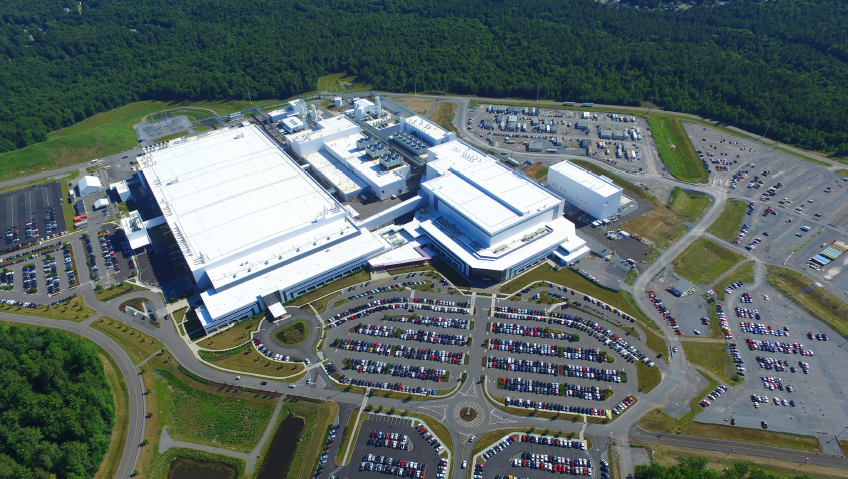Home to the University of Alabama, Tuscaloosa has always been a major destination for college football fans. Now, in addition to this longstanding claim to fame, the community has earned a place on the map as a center for research and is attracting new industries as a result. Business in Focus sat down with Justice Smyth, Executive Director of the Tuscaloosa County Economic Development Authority (TCEDA), to learn more.
Founded in 1831, the University of Alabama is the largest employer in Tuscaloosa County, with approximately 10,000 faculty and staff. The university has grown significantly over the past couple of decades, both in size and prestige. “In the early 2000s, there were approximately 21,000 students, both in the undergraduate and graduate levels,” Smyth says. “Now there are just shy of 40,000. They’ve done a really impressive job of attracting talent from all over the country, really all over world. They have students from every state in the United States [and many] international students. The talent and the quality of these students is really something that’s noteworthy. Every year, the freshman class is the best and brightest freshman class they’ve ever had. So, it’s become a marquee destination, not just a regional institution any longer.”
This is good news for the entire region. “Obviously, that has a huge economic impact,” says Smyth. “Just having that number of students coming in here, spending money in the community, living here for four to six years. But the thing that I think is even more impressive is the burgeoning research enterprise and the impact that it has on the state. For the vast majority of the university’s history, it was not a place where a significant amount of research was conducted. It was a great place to get a traditional liberal arts education; if you wanted to go to law school or get a business degree, that was absolutely the place to do it. But if you were conducting research anywhere in the Southeastern United States, it was primarily done in Birmingham, or Atlanta, or in the research triangle in North Carolina, or Oak Ridge National Labs in Tennessee.”
This dramatic shift has taken place very quickly. “In the last eight years, UA has become a tier 1 research institution,” Smyth says. “They had over $250 million in sponsored awards last year and they’re one of the fastest growing R1 universities in the country. They’re the number one National Science Foundation-funded academic institution in the state. Their growth rate for NSF funding is over 158 percent and their research expenditures last year were approaching $200 million.”
This remarkable expansion did not happen by accident. “The university was really strategic and wise in the way that they went about growing the research enterprise,” Smyth says. They did not want to compete with nearby institutions, such as The University of Alabama in Birmingham, which conducts major medical research. “The campus in Tuscaloosa decided, ‘well, we don’t want to do something that somebody else already has an expertise in. We don’t want to compete; we want to carve out our own niche.’”
As a result, the decision was made to create five signature research institutions focused on cyber, life research, materials, transportation, and water. “The two that are the most mature are the transportation institute and the water institute,” Smyth explains.
The Alabama Transportation Institute (ATI) includes the Alabama Mobility and Power Center, a public private partnership between The University of Alabama, Mercedes-Benz U.S. International, Inc., and Alabama Power Company, the largest electric utility company in the state.
“They’re focusing on everything that has to do with the transition from internal combustion engines to electric vehicles and other forms of mobility as well. That’s something that’s really important as the automotive industry goes through this transformation.”
When it comes to water-based research, there are several different federal partners based on campus. The National Water Center, run in partnership with the National Oceanic and Atmospheric Administration (NOAA), has been operating for around a decade. The newest addition is the state-of-the-art Hydrologic Instrumentation Facility (HIF) created in partnership with the United States Geological Survey (USGS). Scheduled for completion this month, the facility was previously located in NASA’s Stennis Space Center in Mississippi. “Several years ago, congress recognized that there was a need for new facilities,” Smyth says. “They directed the USGS to collocate with a complementary academic institution.”
This combination of resources in Tuscaloosa is unique. “The cumulative assets that exist are unparalleled anywhere in the world,” Smyth says. “There’s no place on Earth that has these types of facilities coupled with federal resources and just the brain power from the faculty and staff and students that are coming through. And so, we’re seeing that this is serving as a magnet for industry to come to Tuscaloosa to conduct research and then eventually locate here permanently.”
For example, Tuscaloosa has caught the attention of Techstars, the most active pre-seed investor in the world. “They were founded in Boulder, Colorado for the purpose of growing start-up companies that were coming out of the University of Colorado, and since that time, they have located in 50-odd locations all around the world. They’ve helped grow 4,000 companies through their accelerator program and the cumulative market value of those 4,000 companies is in excess of $111 billion.”
Up to this point, Techstars had focused on larger population centers. “Tuscaloosa is by far the smallest community where they have a physical presence and have ever had a physical presence,” shares Smyth. “Traditionally, they look to places that have at least a million population… The reason that we were able to attract them is because of all the things that are happening at the University of Alabama.”
As the local economy shifts direction, TCEDA is working hard to stay ahead of the curve. “We were established in the mid-1970s for the purpose of recruiting manufacturing companies to our area. Since that time, we’ve been involved in the recruitment of about 20,000 jobs and a little over nine and a quarter billion dollars in capital investment. But we also recognize as an organization and as a community that the economy is changing and if you’re going to continue to survive and thrive as a community, you have to adapt to those changes. And so fortunately for us, we have tremendous assets here that can help us compete in the so-called knowledge economy—the jobs of the future that perhaps require less brawn and more brain.”
The University of Alabama is not the only institution of higher learning that is developing this brainpower in Tuscaloosa. Stillman College, a Historically Black College founded in 1876, is also located in the community. In addition, the county is home to Shelton State Community College. “Stillman College offers a traditional liberal arts education, but they also do some research on cyber and biomedicine,” Smyth says. “And then Shelton State is an incredible place to get your traditional industrial skills.”
This combination of educational resources has been foundational to the community’s success. “We have so many partners in higher education that contribute to economic development in our community,” says Smyth.
TCEDA is eager to support the many businesses that are attracted to Tuscaloosa’s diverse economic opportunities. “When a company comes to Tuscaloosa County, we don’t want to just leave them to their own devices and say, ‘thanks for coming, good luck.’ When you come to Tuscaloosa, you become a partner with the community. We want to do everything that we can to help you succeed, whether that means finding qualified employees for your business or overcoming other obstacles—whether that’s related to transportation, or raw materials, or getting your finished product out to market. You have a true partner, not only with our organization, but with the local governments.”
Whether expanding or newly relocated to the county, local businesses have a lot to look forward to as they take advantage of the research boom. And this is only the beginning. “I think that we’ll continue to see opportunities,” Smyth says. As future opportunities emerge, TCEDA will be ready to continue to support the community’s businesses so that they can take full advantage of all the region has to offer.






